The internet has always been in flux, a place where sites rise, dominate, and then quietly fade away into oblivion, leaving only traces behind. Yet, for those of us who grew up online, these sites weren’t just web addresses; they were part of our digital lives. Today, many of them exist only in memory, or in the dusty archives of the Wayback Machine.
Some of these sites are not only completely gone, but their domains are now up for grabs on registrars like Namecheap. Others redirect to entirely different websites or bland landing pages. Join me for a trip down memory lane as we revisit some of the most iconic websites of the early internet era.
6
AltaVista (1995–2013)
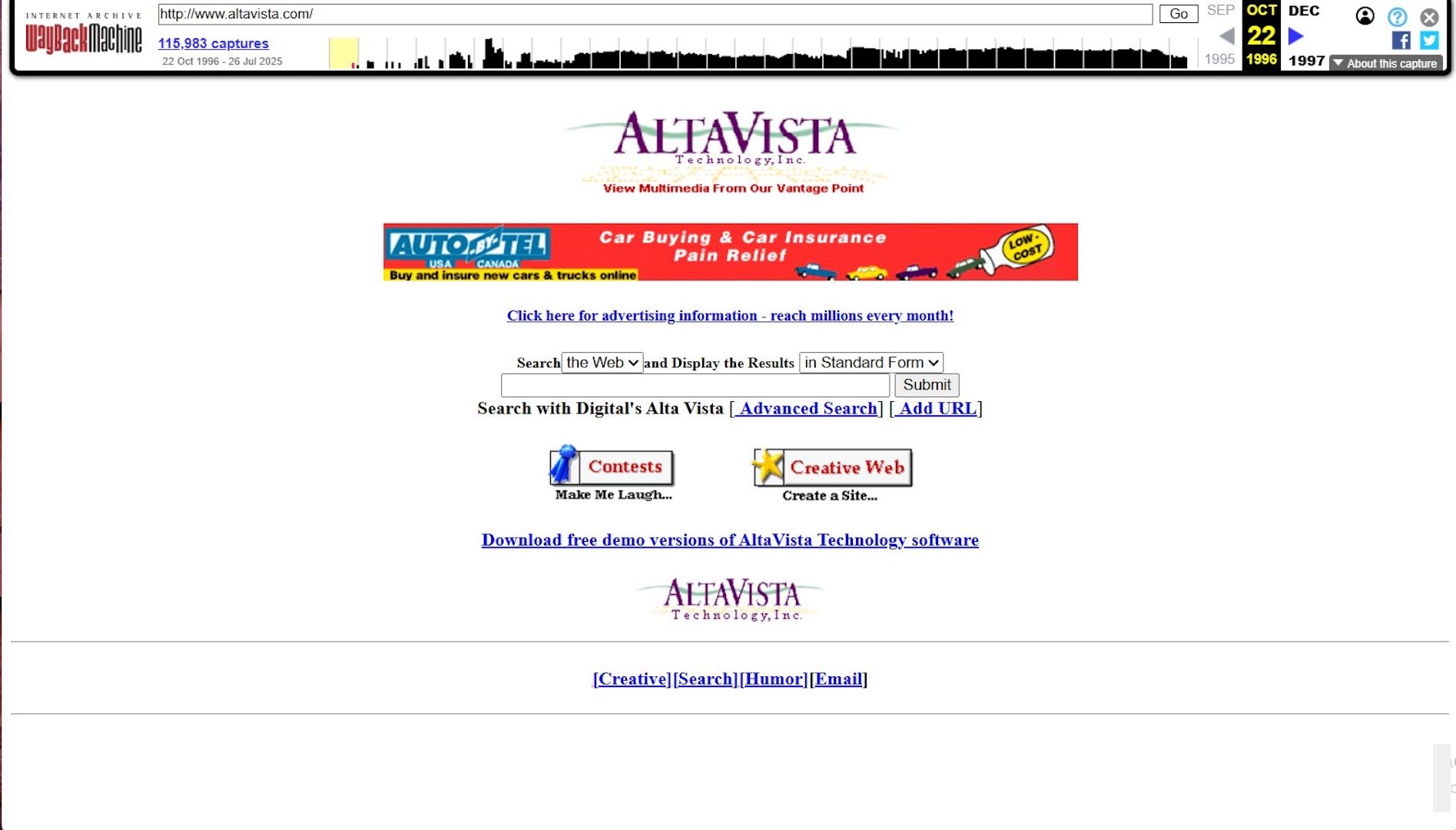
Before Google became king, there was AltaVista. Launched in 1995 by Digital Equipment Corporation’s Paul Flaherty, it was one of the first real search engines–a portal that opened up the vast, uncharted web. Thanks to its pioneering web crawler (built by Louis Monier) and indexer (developed by Michael Burrows), AltaVista made the internet feel searchable in a novel way.
At its peak, AltaVista was a household name. In fact, it was the 11th most visited site in the late ’90s, and for a while, it looked unbeatable and unstoppable. But then came Google. By the early 2000s, Google’s cleaner interface and superior algorithm left AltaVista in the dust and coughing. Yahoo! would later acquire it in 2003, and a decade later, it was quietly shuttered in 2013, redirecting forever to Yahoo! Search.
Still, if you pull up its 1996 homepage on the Internet Archive, you can almost feel that early-web excitement, the sense that the entire internet was at your fingertips.
5
GeoCities (1994–2009)
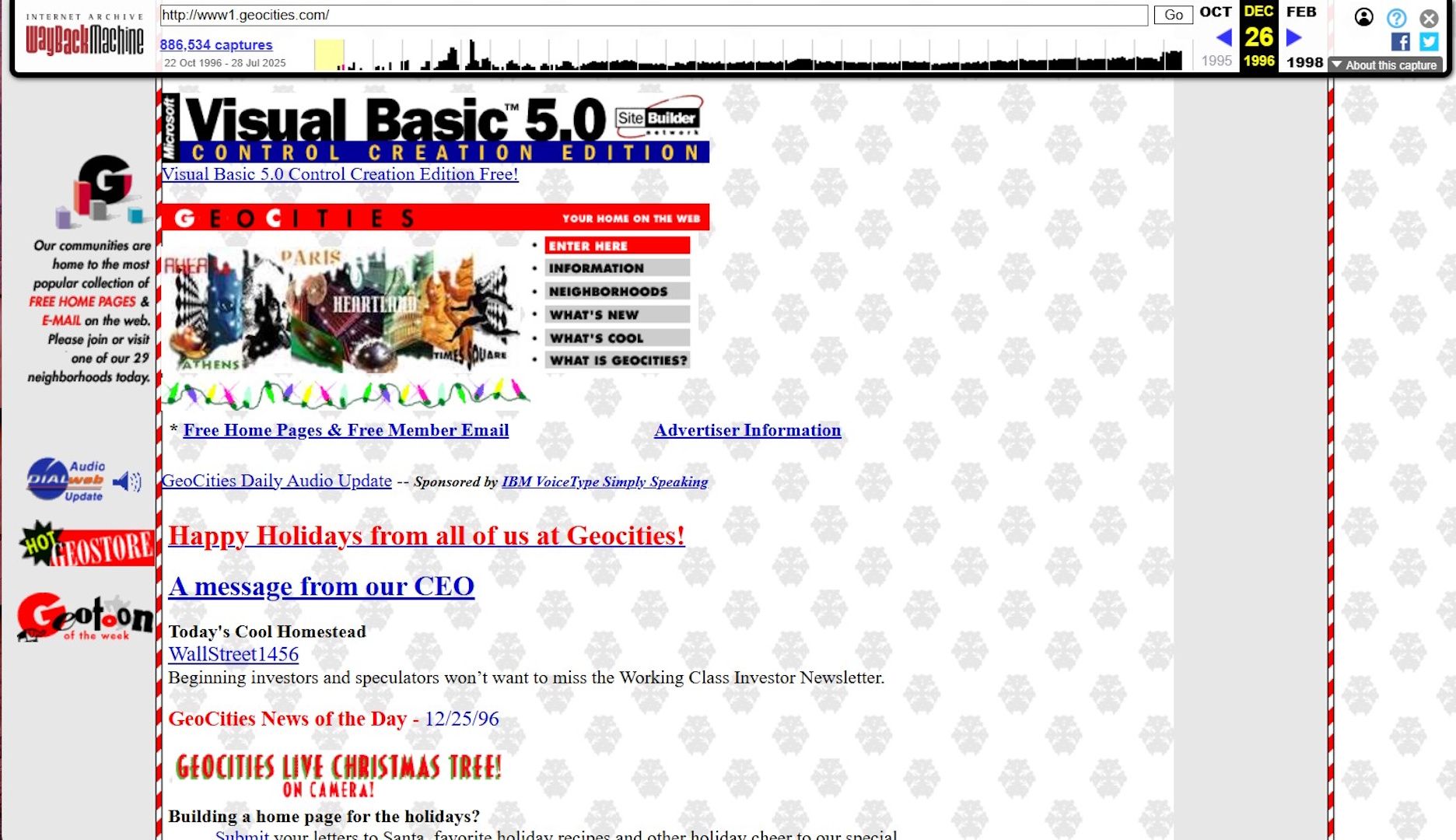
While AltaVista helped us explore the web, GeoCities let us build our own little corners of it, thanks to founders David Bohnett and John Rezner. Launched in 1994 as Beverly Hills Internet, it was rebranded as GeoCities a year later and became one of the first places where ordinary people could create their own websites, for free.
Its neighborhoods were organized by themes and interests, turning the internet into a sprawling, DIY city named after real cities. For many of us, it was our first real taste of HTML, a place to experiment, customize, and proudly display our personal passions, especially as HTML 2.0 was being standardized at the time.
By 1999, it was the third most visited site in the world and was eventually acquired by Yahoo! But in 2009, Yahoo! pulled the plug. More than 38 million personal pages vanished overnight, and with them, a chunk of early web culture. These days, a warning page leads to Yahoo!, but the Wayback Machine still holds those quirky, glittery websites, a digital time capsule of the internet’s youth.
4
StumbleUpon (2001–2018)
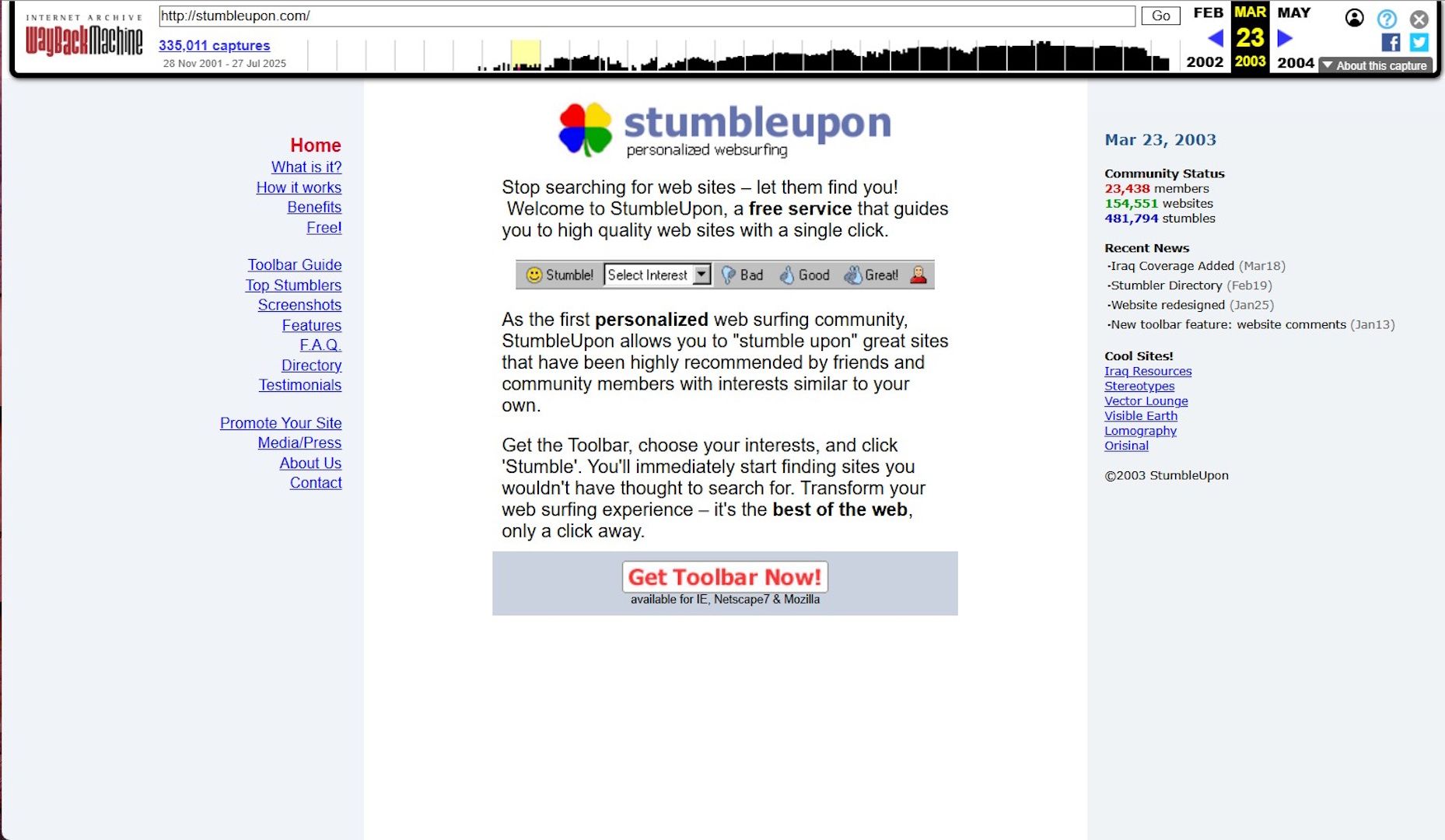
If GeoCities was for building sites on the net, StumbleUpon was for discovering what was already built. Launched in November 2001 by Garrett Camp (who would later found Uber) and his team, including Geoff Smith, Justin LaFrance, and Eric Boyd, it was like spinning a wheel of fortune for the internet. All you needed to do was click a button, and land on a random site perfectly tailored to your interests.
Before Facebook’s algorithmic newsfeed or TikTok’s For You page brought their magic, StumbleUpon was the go-to place for serendipitous discovery on the web. One minute, you’d be reading a fascinating article about space or science; the next, you’d be watching a bizarre flash animation. It was random. It was addictive. And it was a wonderful time to be alive and online.
But by 2018, the magic faded. Social media had come into the picture and stolen the limelight. It wasn’t long before Garret and StumbleUpon both announced its shutdown, replaced by a platform called Mix, which sparked mixed reactions from users. Sadly, Mix never quite captured the same spark as StumbleUpon. Still, if you dig into the 2003 version on the Internet Archive, you can almost feel that thrill of stumbling upon something completely new.
3
Yahoo! Answers (2005–2021)
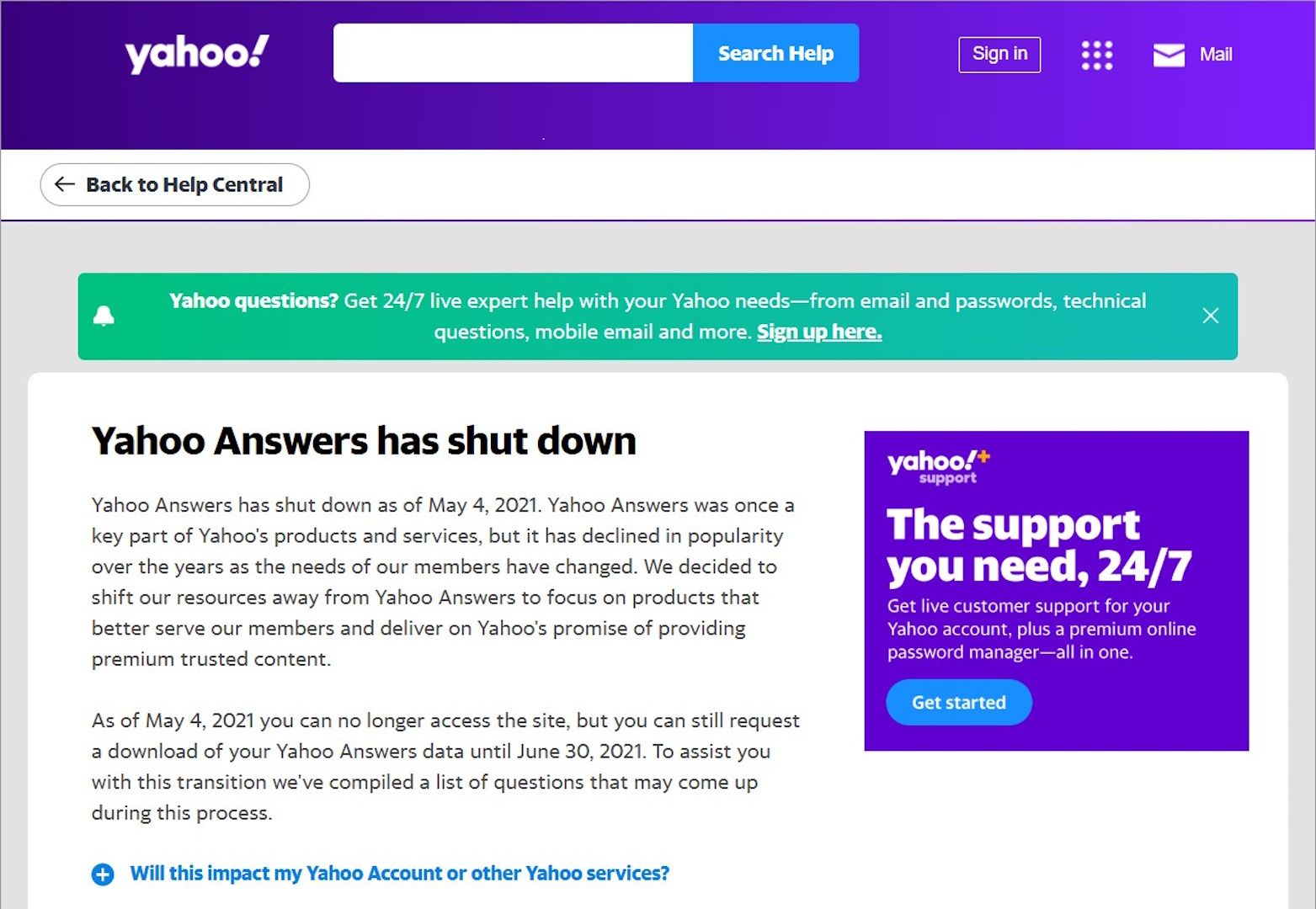
As we moved further into the 2000s, Yahoo! Answers became the go-to place for curiosity. Launched in 2005, it turned the internet into a massive community Q&A forum, where you could literally ask anything and get responses from people all over the world.
For years, it was a treasure trove of information, advice, and comedy gold. Whether you wanted tips on fixing your computer or just needed to know if penguins were birds, someone out there would answer.
But as Reddit, Quora, and social media rose, Yahoo! Answers struggled to stay relevant. After 15 years of trying, Yahoo! eventually shut it down in 2021, redirecting the site to Yahoo! Search. Still, peeking at its archived 2005 beta page brings back a flood of memories of late-night question threads and unexpected connections.
2
Megaupload (2005–2012)

If Yahoo! Answers was about asking questions and getting answers, Megaupload was about sharing and receiving files. Founded in 2005 by Kim Dotcom, this Hong Kong-based service became a giant in file hosting. At its peak, it had over 180 million users and was the 13th most visited site in the world.
It wasn’t just movies and music, people used it to share all kinds of files. But its popularity also brought legal troubles in the form of copyright infringement. In 2012, the FBI swooped in, seized its domains, arrested its owners, and took the entire service offline in a widely publicized takedown.
In fact, popular hacktivist group, Anonymous, attacked some US government sites in protest. Kim Dotcom later launched Mega, which lives on today as mega.io, but the original Megaupload remains frozen in time on the Wayback Machine—a monument to the wild west days of file sharing.
1
ChaCha (2006–2016)
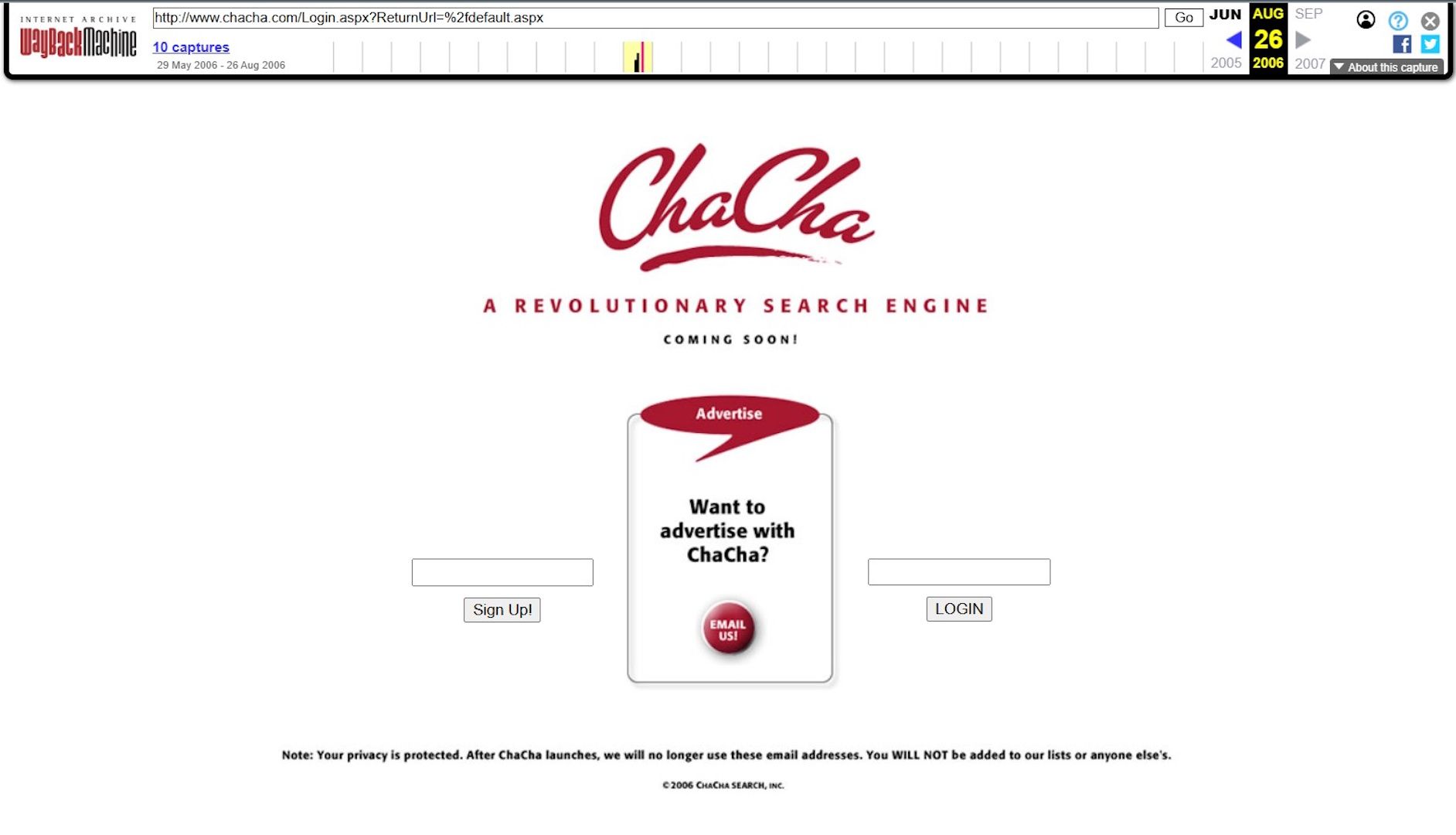
Finally, as search engines became more automated, ChaCha tried to bring the human touch back to finding answers. Launched in 2006 by Scot A. James and Brad Bostic, it paired users with live guides who helped refine and answer queries in real-time.
In 2008, it went mobile, letting people text questions to 242-242 for free and receive curated responses, which was a unique innovation back then. At its peak, ChaCha was reportedly handling a million questions a day, making it feel more like chatting with a knowledgeable friend than using a machine.
But humans can’t outpace algorithms forever. By 2012, its UK operations shut down, and by 2016, the company folded completely due to dwindling revenues. Now, all that remains are its archives, showing a bold experiment in making search personal.
Looking back at these sites, it’s hard not to feel nostalgic. They were more than just tools. They were part of the fabric of our digital lives. Whether it was building a home on GeoCities, falling down the rabbit hole on StumbleUpon, or asking the weirdest questions on Yahoo! Answers, these sites shaped how we explored and experienced the internet.
Thanks to web archives, we can still (re)visit these digital relics, frozen snapshots of a younger, wilder web. Isn’t it scary that one day, the apps and sites we use today may also be memories for someone else? Well, that’s the beauty of the internet, it’s all part of the circle of (internet) life.
